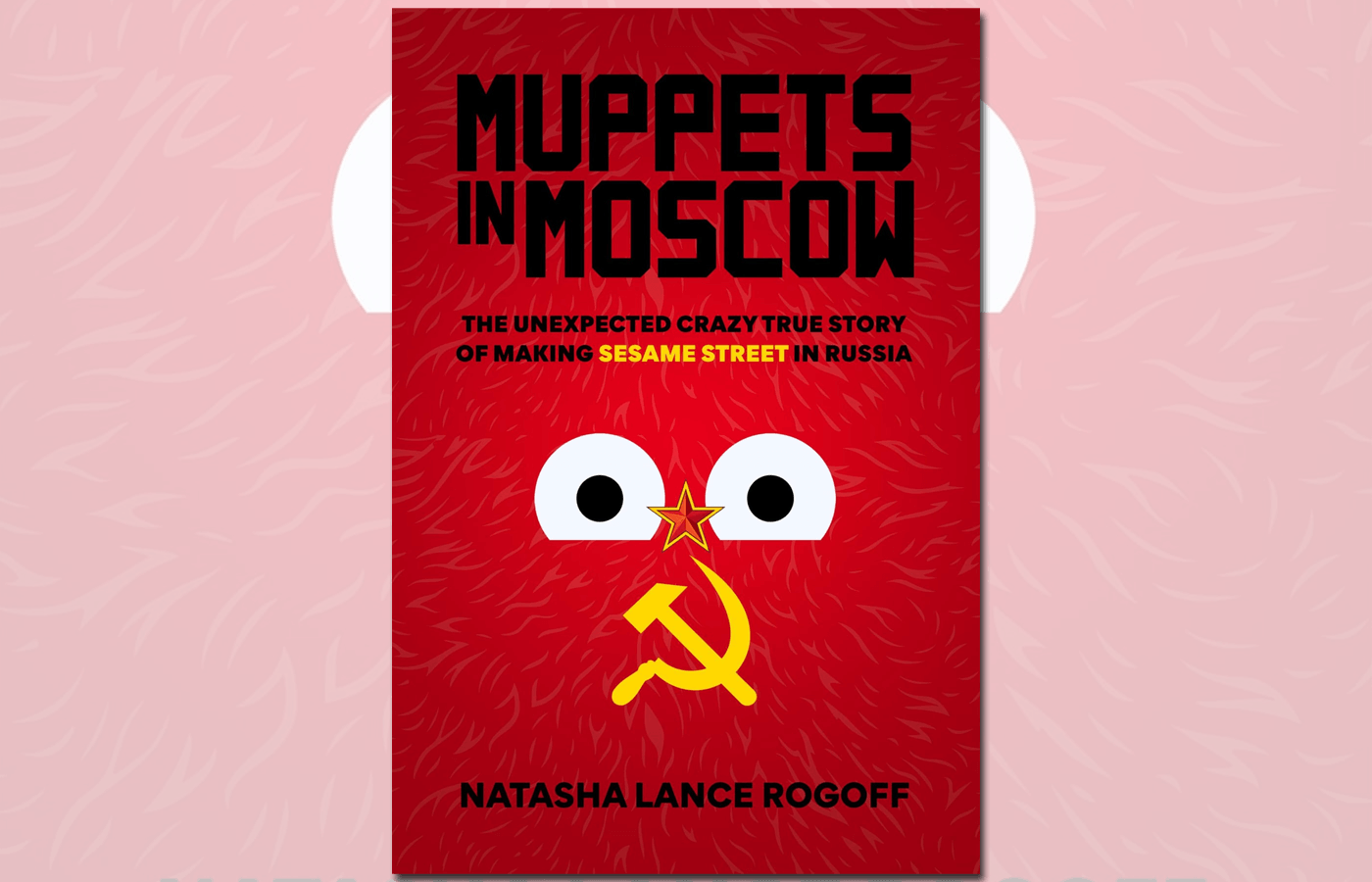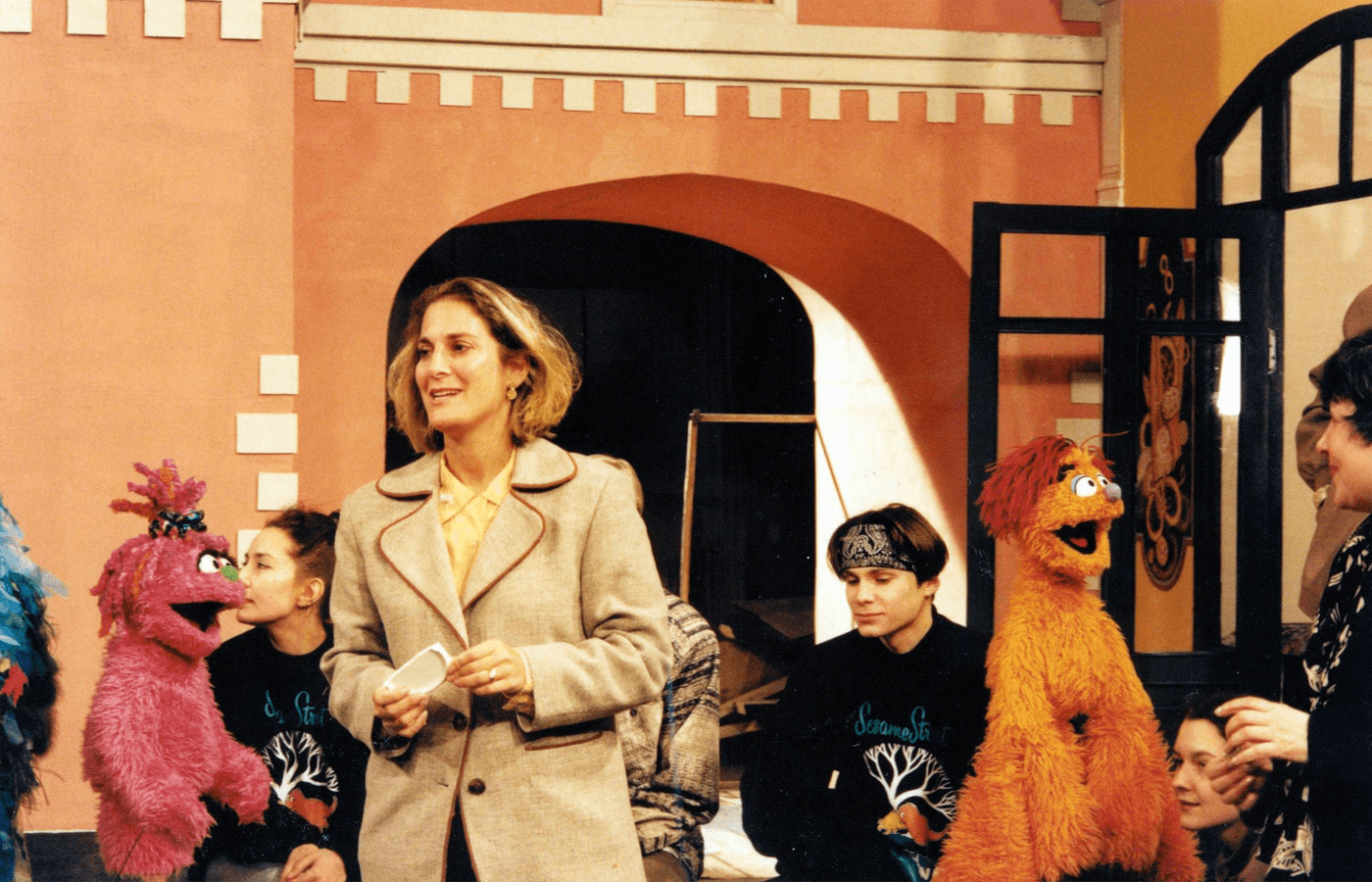
Muppets in Moscow: The Unexpected Crazy True Story of Making Sesame Street in Russia
by Natasha Lance Rogoff
Rowman & Littlefield, 2022, $26.95; 302 pages.
As reviewed by Frederick M. Hess
Thirty years ago,in the wake of the Cold War, the powers that be at Sesame Workshop recruited a young documentary filmmaker to bring Sesame Street to Russia. This is her story. Natasha Lance Rogoff found herself courting Russian oligarchs, assembling financial deals, recruiting puppeteers, assuaging bureaucratic sensibilities, and seeking to promote a culture of empathy amidst the violent, anything-goes culture of early 1990s Moscow.
Today, Lance Rogoff is an award-winning television producer and the wife of globe-trotting Harvard economist Kenneth Rogoff (whom she meets and marries in the course of the narrative) and Putin’s Russia has little use for children’s television. But this is a tale firmly rooted in the early 1990s. And it’s quite a tale, one that doubles as an evocative primer on educational entrepreneurship, cross-national collaboration, cultural literacy, and puppet design.
In launching Ulitza Sesam, Lance Rogoff was tasked with landing Russian and American stakeholders, finding a production partner, and then producing the show. Early on, Lance Rogoff meets with Russian billionaire Boris Berezovsky, a former Soviet mathematician who controls Russia’s largest television network. Berezovsky, described as “Russia’s Don Corleone,” meets Lance Rogoff and her sidekick for dinner at Moscow’s first sushi restaurant, where he agrees to provide the necessary $3 million.
Thus the reader appreciates Lance Rogoff’s distress when she receives word that Berezovsky’s car has been blown up. She frantically tries to find out if he survived, and learns that no one knows but that the blast decapitated his driver. Berezovsky did survive the assassination attempt, only to flee to Europe. The deal was kaput. As one Russian television executive had warned, “It’s impossible to negotiate any deals with Russian television executives today, because one year from now any of the people in charge could be fired, in prison, or worse—dead.”
Lance Rogoff eventually connects with post-Soviet oil tycoon Vladimir Slutskyer and his circle of new-money Russian oligarchs (including Russia’s “Sausage King”). She meets them at a cement warehouse with 12-foot-high steel gates, armed guards, and a barbed-wire fence, after Slutskyer explains that the group never meets in the same place twice. Lance Rogoff drily tells the reader, “This is disconcerting, but I guess it’s a good sign they’re taking precautions. Maybe one of them will live long enough to become our partner.” The oligarchs pledge $12 million, but the deal is nixed by Lance Rogoff’s boss, who tells her, “What you’re proposing is a Ponzi scheme—cooked up by a bunch of corrupt businessmen.”
It was back to square one.

Producing the children’s show featured its own frustrations. At an initial meeting with the writer and directors that Lance Rogoff hopes will anchor the show, the backlash is harsh. She shows them some Sesame Street clips. One director shakes his head, “The Sezam Street-style Monsters are not Russian, and they are too strange looking for Russia.” Lida Shurova, who gets hired as head writer, adds, “Russia has a rich, and revered puppet tradition. . . . We don’t need your American Moppets.”
Foreign-language versions of Sesame Street typically use a combination of the original American Muppets and local creations. When Lance Rogoff meets with the celebrated Russian puppeteer Kolya Komov, though, he suggests that the new show simply use his puppets instead of the Muppets. Komov sends the room into gales of laughter when he picks up his traditional folk puppet Petrushka, has it grab a tiny stick, and starts beating the sock puppet in his other hand while shouting in Russian, “I’m going to kill you!” Komov gloats, “You see? Everyone loves my puppets.” There’s also an insistence on including Baba Yaga, a Russian witch who eats children. Lance Rogoff sighs, “We have moved from Petrushka, who beats people, to a cannibal witch.” They eventually settle on three new Slavic Muppets, though the Russians complain that orange monster Kubik doesn’t look sufficiently Russian. Lance Rogoff figures the problem is the spare eyebrows. She explains to the New York puppet designers, “He has to look more like Brezhnev.”
There’s not much smooth sailing. A major curriculum-planning confab is interrupted when Chechen rebels seize Budyonnovsk. Lance Rogoff’s honeymoon ends after 12 hours when she gets a call informing her that soldiers with machine guns have seized her Moscow offices. Getting her Russian production partner to deliver promised funds is a losing struggle. As one director tells her, “It’s best to avoid delays by never writing anything down; that way you’ll never know if there are delays or not.”
At a planning session, a Russian math consultant impatiently explains, “Our preschoolers are much smarter than American children. We will need a more advanced curriculum for our show.” Dubbing American footage is a challenge because the Soviets hadn’t really dubbed international film or television for three decades; they’d had a single announcer read all the dialogue for all the characters in a monotone. And the story of the Russians’ first trip to New York City is rife with telling details—including Lance Rogoff learning that she can’t take them to a highly regarded Italian restaurant because they’d be insulted by the pasta. As her consultant tells her, “Only poor people eat noodles. Find a steakhouse.”
In the end, the show comes together, wins coveted prime-time commitments on both of Russia’s major networks, and is able to recoup its substantial costs. But the cultural tensions are stark, and revealing, throughout. Lance Rogoff muses that, despite the enthusiasm for Western products and entertainment, Russians fear for their national identity and fret over “American culture hijacking Russian childhood.” When Lance Rogoff suggests a show segment on kids running a lemonade stand, it’s rejected because it would portray children engaged in “dirty mercantile activities.” The head writer, a veteran of the old regime, rejects scripts from younger writers, sniffing that they lack “any scientific understanding of writing” and that they’re unrecognized by the Soviet-era Union of Writers.
For those of us who fear that Americans today are too flip about the evils of communism, Lance Rogoff’s frank discussion of the Soviet legacy is most welcome. She relates what one Russian executive tells her: “Every successful Russian enterprise needs a good spy. Unless someone is watching us, we Russians do not work. We’ve lived in a police state for seventy years and are creatures of habit.” In seeking the right musical mix for Sesame Street, she laments, “Since the days of the Beatles, the Rolling Stones, and Jim Morrison, the Soviet Ministry of Culture had outlawed rock music as ‘decadent, bourgeois, and incompatible with the aims of socialism.’” She notes that the Soviet state silenced “artists whose music aesthetic did not conform to communist cultural ideals.” Those unfamiliar with the realities of Soviet Russia might just get a new appreciation for life in the totalitarian superpower.
Lance Rogoff’s unsparing account is a testament to the power of perseverance, flexibility, and the conviction that this children’s show could matter in the lives of little kids in a land where people had suffered under decades of oppression. It’s ultimately a deeply inspiring tale, even if (as might be expected from a Russian history) it’s also one tempered by an epilogue that notes that Putin canceled Ulitza Sesam in 2010 and has ravaged the shoots of freedom that arose during the post-Soviet pathos.
The volume is far from flawless. There are times when the tenor grows mawkish, the narrative unclear, or the personalities indistinguishable. But such complaints are outweighed by the volume’s charms, such as this: On his first night in America, a Russian staffer tells Lance Rogoff, “People here seem so free.” He sadly ponders, “Everyone looks happy. . . . I wonder what I might have accomplished as a young man if the choice in my country had been greater.”
Lance Rogoff doesn’t know what to say. Finally, the Russian breaks the silence, his voice cracking slightly, “Natulya, I hope you realize how lucky you are that you grew up here.”
Indeed. It’s a sentiment that those of us involved in American education would do well to recall more often.
Frederick M. Hess is director of education policy studies at the American Enterprise Institute and an executive editor of Education Next.
This article appeared in the Spring 2023 issue of Education Next. Suggested citation format:
Hess, F.M. (2023). How to Get to Sesame Street— in 1990s Russia: A tale of perseverance, flexibility, and the conviction that a children’s show could matter for kids in a land of oppression. Education Next, 23(2), 64-65.


